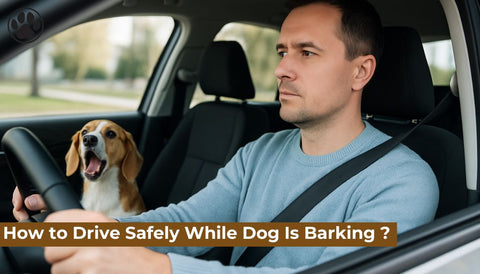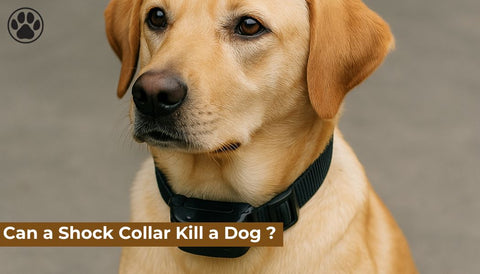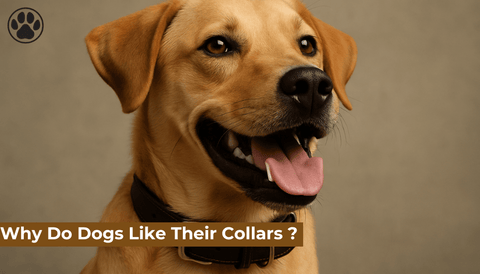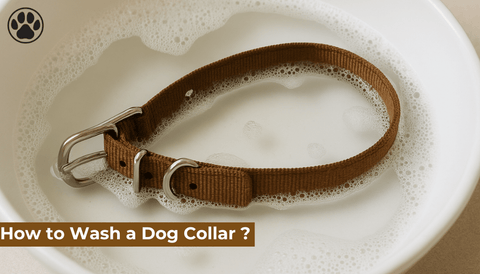
How to Get a Mat Out of Dog Hair ?
of reading - words
Dog owners know that keeping their furry companions well-groomed can sometimes be a challenge—especially when mats and tangles start forming in the coat. Whether your dog has long, curly, or double-layered fur, mats can quickly become painful and difficult to remove if left untreated. If you're wondering how to get a mat out of dog hair without causing discomfort or damaging the coat, you're in the right place.
In this article, we’ll walk through the safest and most effective techniques for removing mats from dog hair, the tools you’ll need, and how to prevent them in the future. We’ll also touch on how accessories like a dog mat can contribute to healthier coat maintenance.
What Are Mats and Why Do They Form?
Mats are clumps of tangled or knotted fur that can form anywhere on your dog’s body, especially in high-friction areas like behind the ears, under the legs, and around the collar or harness.
Common causes of matting include:
-
Lack of regular brushing
-
Wet or damp fur that dries tangled
-
Shedding undercoats getting trapped in top layers
-
Friction from collars, harnesses, or rough surfaces
Untreated mats can trap dirt, bacteria, and moisture, leading to skin irritation, infections, or even painful sores.
How to Get a Mat Out of Dog Hair: Step-by-Step
Removing mats safely requires a calm environment, patience, and the right tools. Here’s a step-by-step method for how to get a mat out of dog hair:
Step 1: Assess the Mat
Before you begin, examine the mat’s size and location. Small, loose mats can be handled at home, but larger or tight mats close to the skin may require professional help from a groomer or vet.
Step 2: Gather Your Tools
-
A slicker brush
-
A dematting comb or mat splitter
-
Detangling spray or conditioner
-
Grooming scissors (only if necessary and with extreme caution)
-
Dog-safe treats for positive reinforcement
Step 3: Apply Detangling Spray
Spray the affected area lightly with a dog-friendly detangling or conditioning spray to loosen the hair and reduce breakage. Let it sit for a minute or two.
Step 4: Use Your Fingers First
Gently try to separate the mat with your fingers, pulling it apart bit by bit rather than brushing through it immediately. This helps minimize discomfort for your dog.
Step 5: Comb Gently from the Ends
Use a dematting comb to start at the outer edges of the mat, working your way toward the base slowly. Hold the fur close to your dog’s skin to avoid tugging at the roots. Be gentle and take breaks as needed.
Step 6: Use a Slicker Brush
Once the mat is mostly worked out, use a slicker brush to smooth out the area and catch any remaining tangles.
Step 7: Trim as a Last Resort
If a mat is too close to the skin and can’t be safely untangled, use blunt-tipped grooming scissors to cut the mat parallel to the hair growth. Always ensure your dog is calm and secure, and never cut near the skin without professional guidance.
Prevention Tips: Keep Mats from Coming Back
Prevention is always easier (and more comfortable for your dog) than dealing with large mats. Here are some tips:
-
Brush regularly—daily for long-haired breeds, 2–3 times per week for others
-
Dry thoroughly after baths or swims
-
Use detangling sprays proactively on problem areas
-
Trim excess hair around friction-prone zones like armpits and ears
-
Keep up with professional grooming, especially for high-maintenance breeds
A Word About Dog Mats
While we’re talking about mats in the fur, it’s worth mentioning another type of dog mat—the one your dog rests on. These are not only helpful for comfort but also contribute to better grooming routines.
A high-quality dog mat provides a clean, consistent resting surface that reduces friction, prevents excess dirt, and helps limit mat formation. Anti-static, waterproof mats are especially beneficial for long-haired dogs who tend to gather dust and debris from the floor. If your dog frequently mats in their belly or side area, upgrading their sleeping area with a non-snagging dog mat can help reduce the issue.
Explore our selection of durable and grooming-friendly dog mats designed to promote coat health and everyday comfort.
Breeds That Are Prone to Matting
Some breeds are more likely to develop mats due to their coat type:
-
Poodles and Doodles
-
Shih Tzus
-
Cocker Spaniels
-
Maltese
-
Bichon Frise
-
Golden Retrievers
-
Collies
If you own one of these breeds, grooming should be part of your regular care routine. Investing in the right tools and knowledge will save you—and your dog—a lot of stress.
Frequently Asked Questions
How do I safely get a mat out of my dog’s fur at home?
Start by applying a detangling spray and gently separating the mat with your fingers. Use a dematting comb and work slowly from the ends inward.
Can I cut a mat out of my dog’s hair?
Yes, but only as a last resort, and never near the skin unless you're trained. Use blunt-tipped grooming scissors and proceed cautiously.
What’s the best brush for matted dog hair?
A combination of a dematting comb and a slicker brush works well for most coat types. Regular brushing is key to prevention.
How can I prevent mats in my dog’s fur?
Brush your dog regularly, especially after outdoor play or baths. Use detangling sprays, and keep long hair trimmed around high-friction areas.
Do dog mats (bedding) help reduce fur matting?
Yes, a smooth, low-friction dog mat keeps your dog cleaner and reduces friction that can lead to tangles—especially for long-haired breeds.




